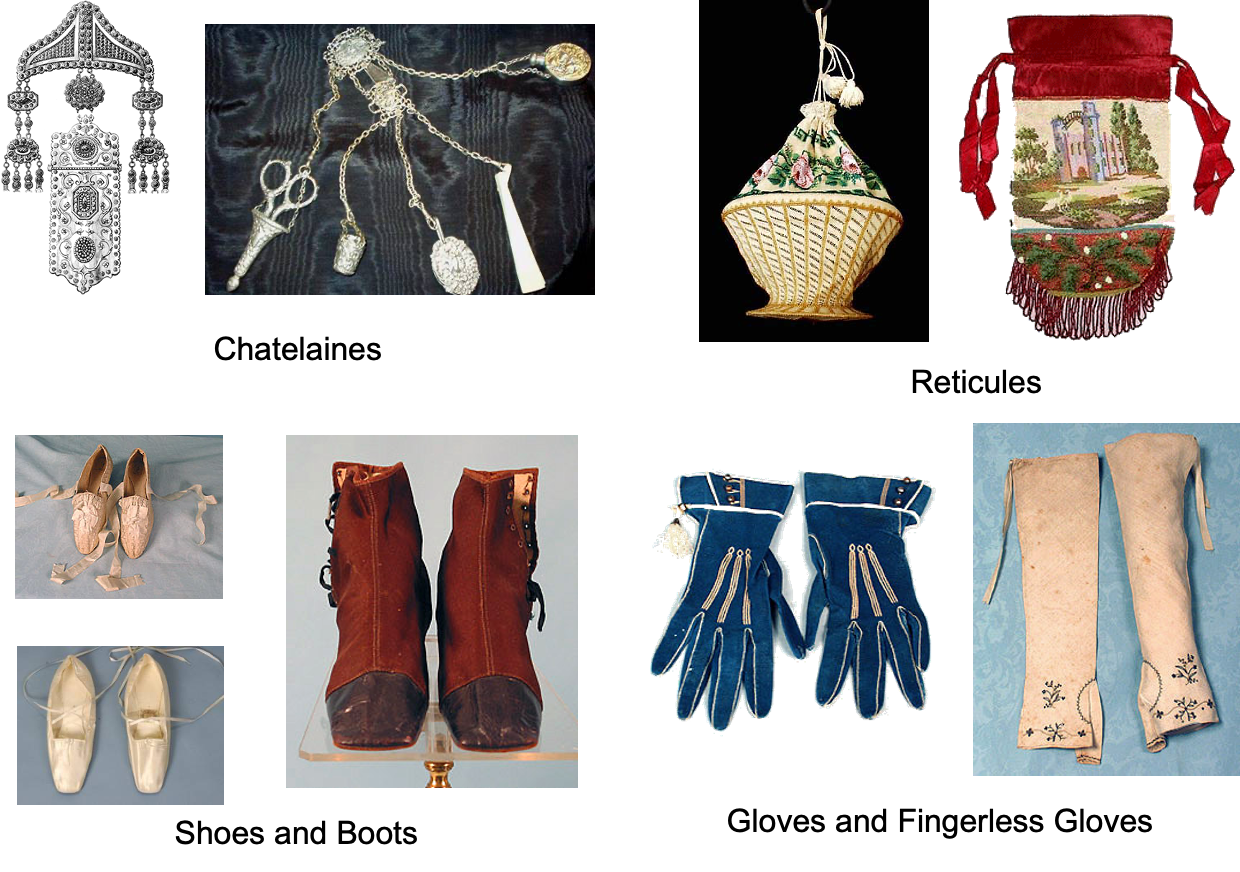Text Hist: Romantic Period
1/5
There's no tags or description
Looks like no tags are added yet.
Name | Mastery | Learn | Test | Matching | Spaced |
|---|
No study sessions yet.
6 Terms
Romantic Period
Named after the movement in the arts and literature that stressed expression of emotions
valued imagination over rational thought and returned to the historic past for inspiration
From the 1840s on, photography documented the way people dressed
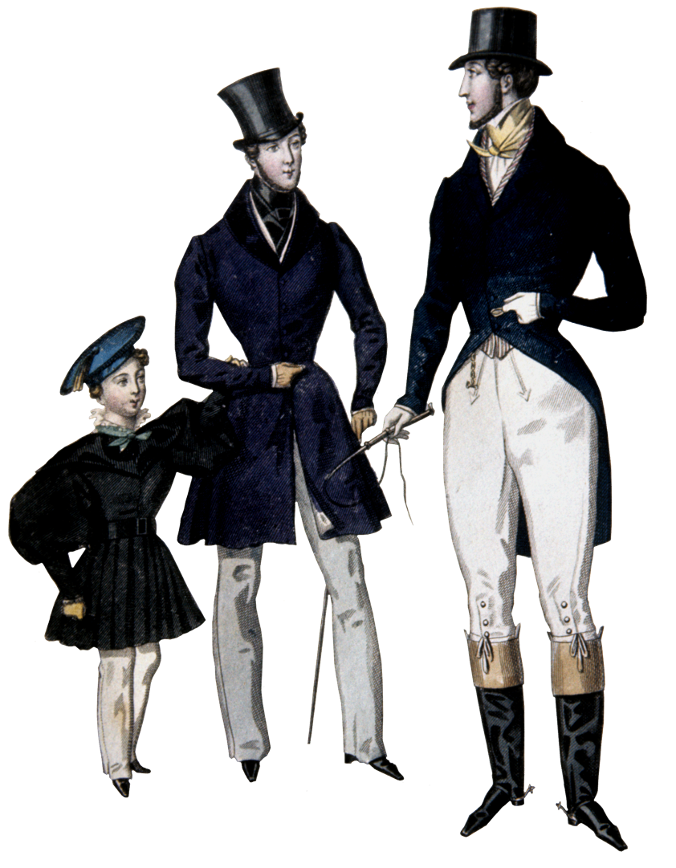
Men’s Clothes Overall:
silhouette of men’s clothing was a faint echo of that of women with narrow waists, flared skirts on coats, and slight enlargement and rounding of sleeves, padded hips
underdrawers, shirts, waistcoats, trousers, and coats
Men’s styles, like women’s, became more subdued in the last decade of the Romantic Period
Outdoors, men wore overcoats or, for more formal occasions, cloaks.
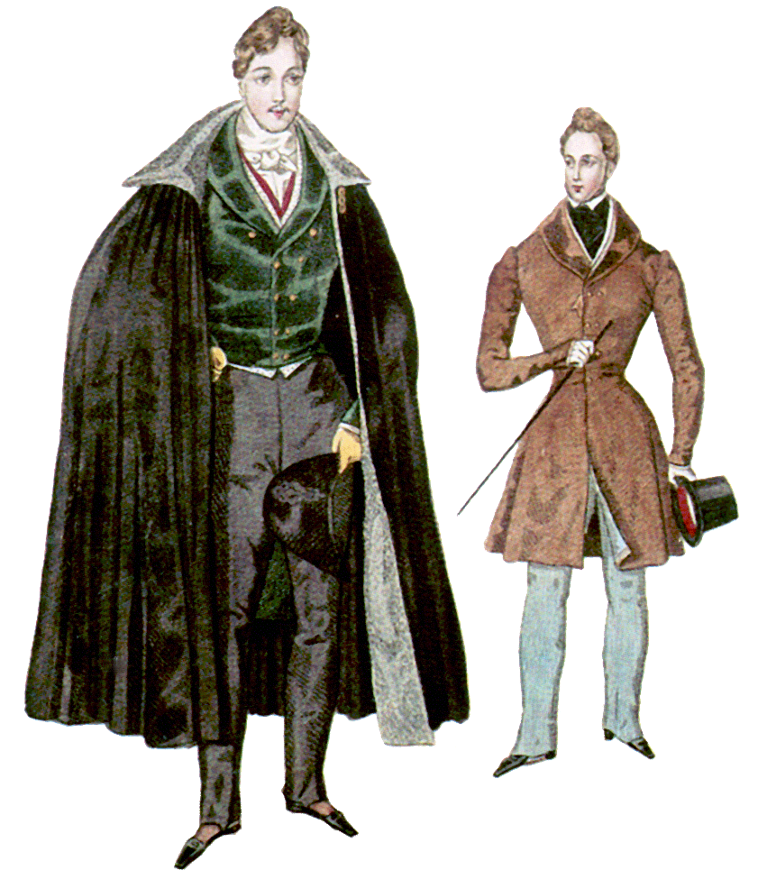
Men’s Accessories:
Hats- top hats
Cravats- now in colors not just white
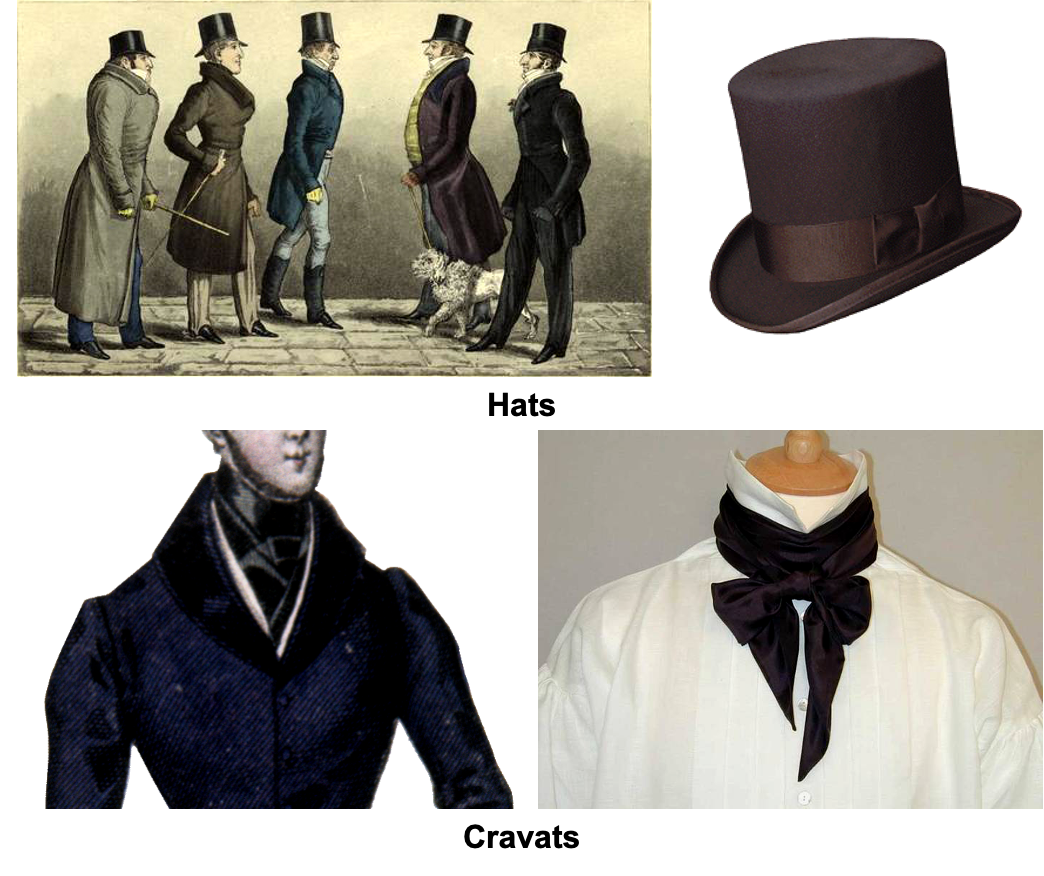
children’s clothing
Children were dressed like small adults, except for small boys who wore skirts until age four or five.
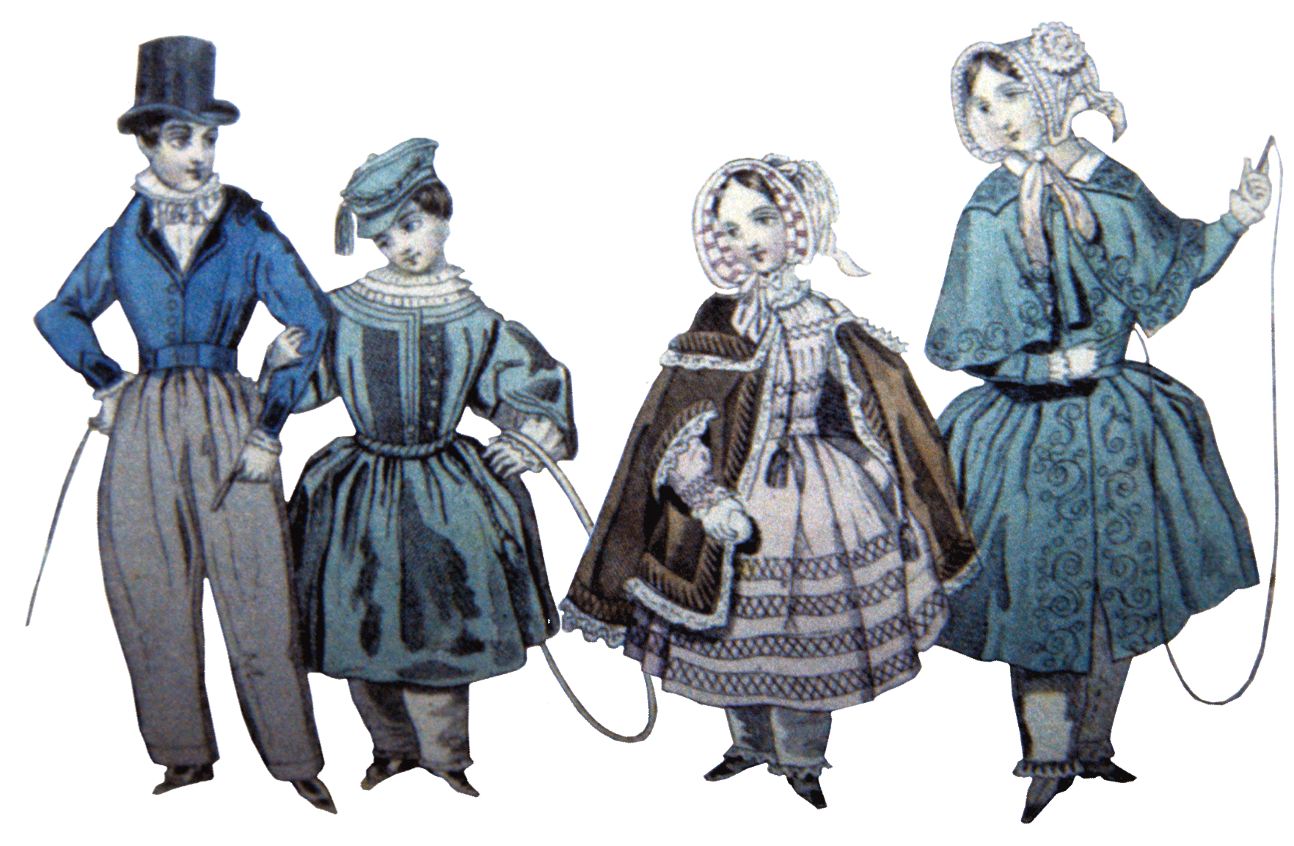
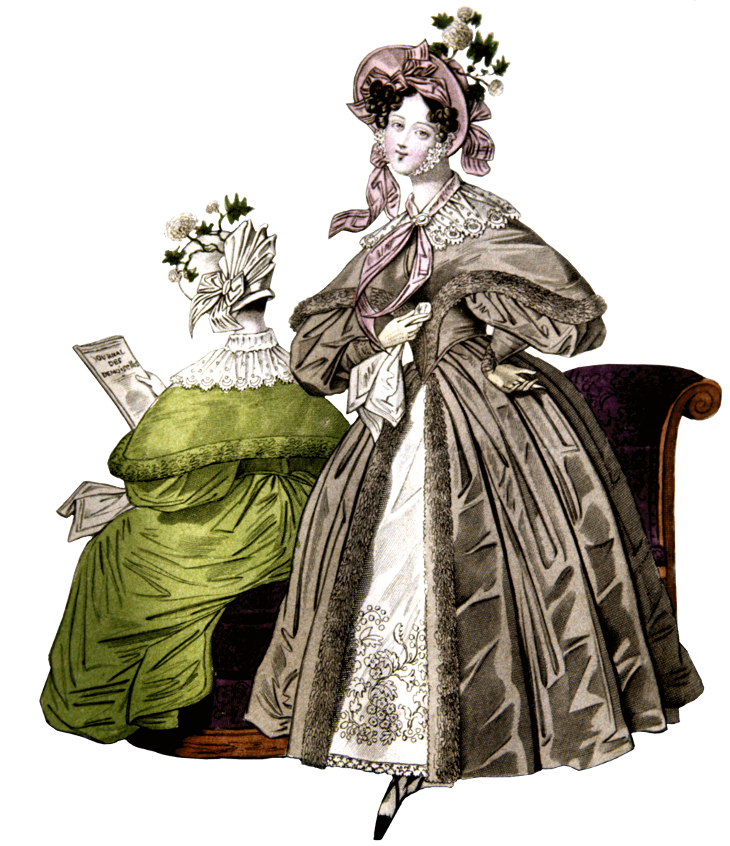
Women’s Fashion Overall:
By the late 1820’s, the new line was established not high-waisted like the empire period but accentuating the natural waistline
In America and abroad, women of all social classes tried to follow fashion. The first American fashion Magazines were published in the 1830s, giving women the latest styles from the center of fashion, Paris
It’s underpinnings remained much the same:
Underdrawers were now more common
A chemise as the next layer
A corset that pulled in the waistline
Over the corset, a corset cover or camisole.
A number of full, starched petticoats
sleeve and bustle pads may be added to hold out the skirts and the large sleeves
Skirts lifted from the ground, showing the feet and ankles
One of the preferred garments for outdoors was a pelisse
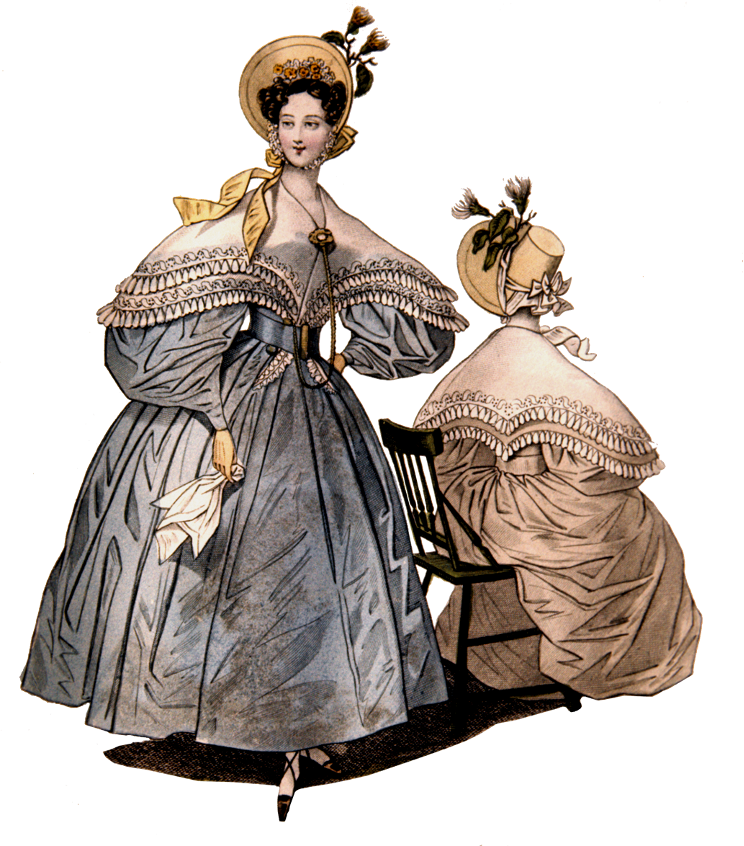
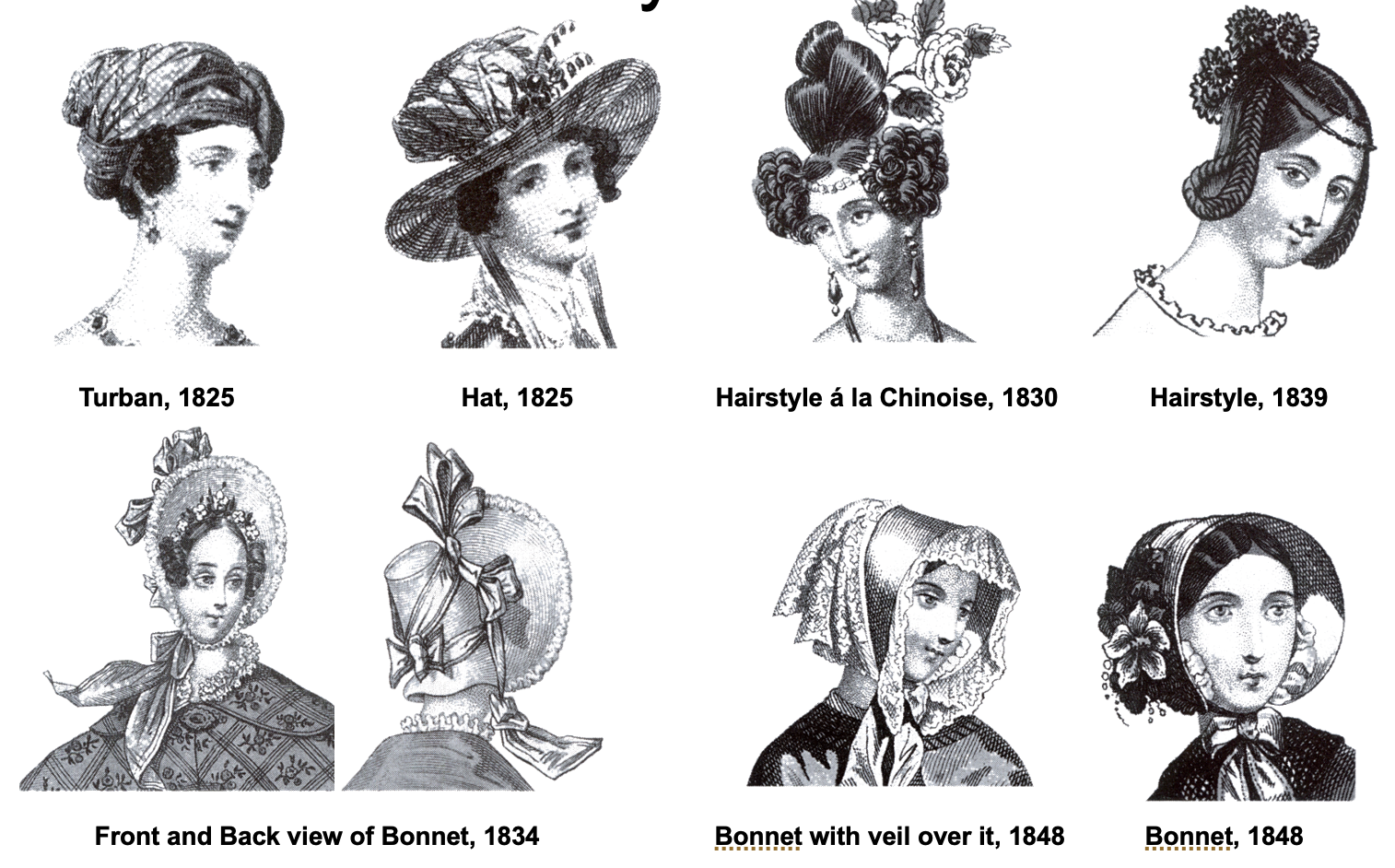
Women’s Accessories:
new hairstyles, bonnets, and turbans
Chatelaines- a decorative hook worn at the waist, from which chains hold useful implements like keys, a watch, or scissors
Shoes and Boots
Reticules
Gloves and Fingerless Gloves
